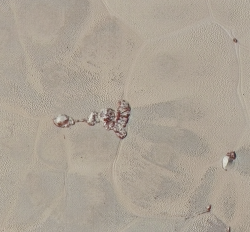China debuts another new rocket
The competition heats up: China successfully completed the first launch of another new rocket today, putting three technology satellites into orbit with its solid-fueled Long March 11 rocket.
The Long March-11 (Chang Zhwng-11) is a small solid-fueled quick-reaction launch vehicle developed by the China Academy of Launch Vehicle Technology (CALT). It’s goal is to provide an easy to operate quick-reaction launch vehicle, that can remain in storage for long period and to provide a reliably launch on short notice. Very little is known about the rocket, with only one badly taken photo available on the internet. However, LM-11 is known to be a solid-fueled launch vehicle equipped with a liquid-fueled trim stage.
Moreover, the three satellites the rocket put in orbit are cubesats designed to test formation flying technologies. This puts China in the forefront of the effort to make these tiny satellites capable of doing what larger satellites now do, thus making possible the eventual replacement of those more costly larger satellites.
The competition heats up: China successfully completed the first launch of another new rocket today, putting three technology satellites into orbit with its solid-fueled Long March 11 rocket.
The Long March-11 (Chang Zhwng-11) is a small solid-fueled quick-reaction launch vehicle developed by the China Academy of Launch Vehicle Technology (CALT). It’s goal is to provide an easy to operate quick-reaction launch vehicle, that can remain in storage for long period and to provide a reliably launch on short notice. Very little is known about the rocket, with only one badly taken photo available on the internet. However, LM-11 is known to be a solid-fueled launch vehicle equipped with a liquid-fueled trim stage.
Moreover, the three satellites the rocket put in orbit are cubesats designed to test formation flying technologies. This puts China in the forefront of the effort to make these tiny satellites capable of doing what larger satellites now do, thus making possible the eventual replacement of those more costly larger satellites.



